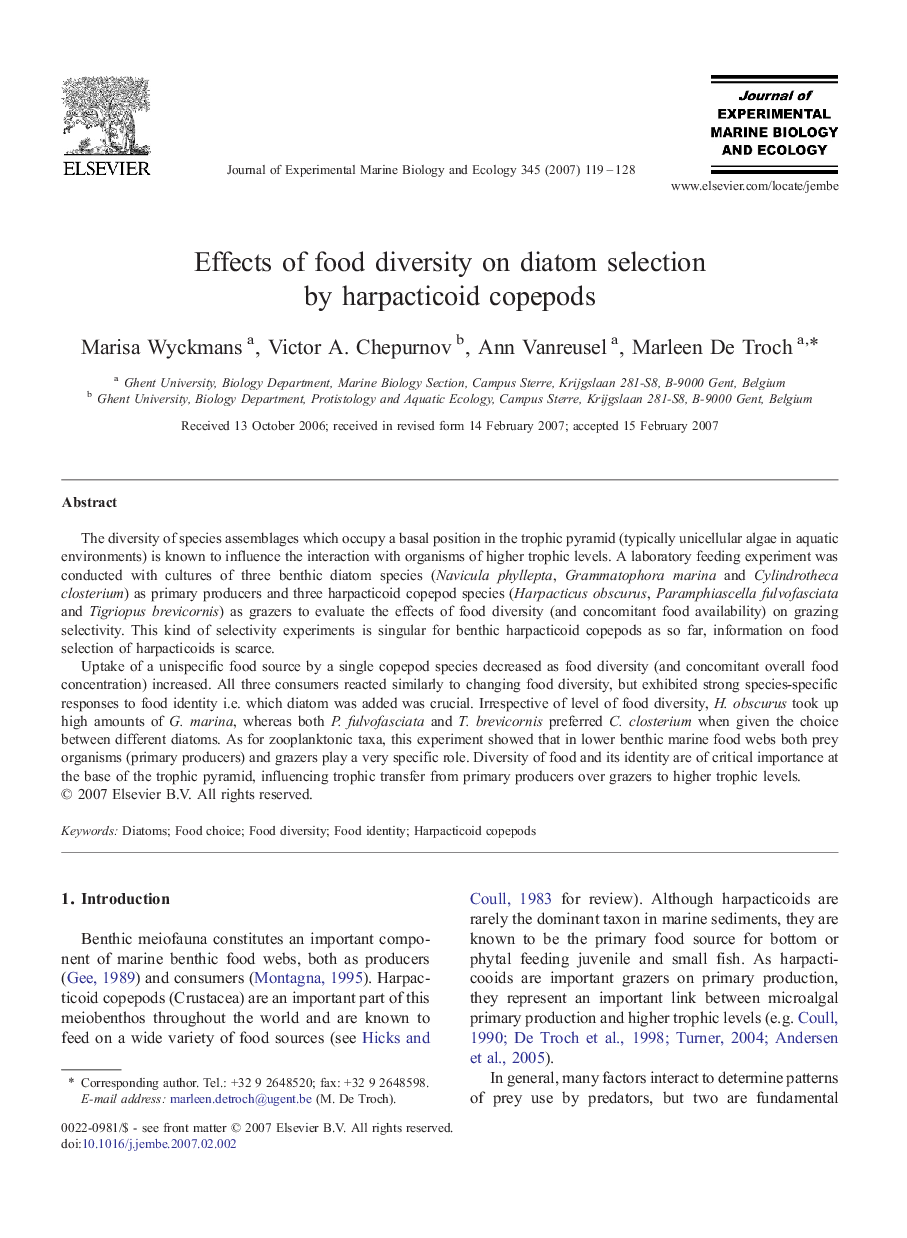| Article ID | Journal | Published Year | Pages | File Type |
|---|---|---|---|---|
| 4397824 | Journal of Experimental Marine Biology and Ecology | 2007 | 10 Pages |
The diversity of species assemblages which occupy a basal position in the trophic pyramid (typically unicellular algae in aquatic environments) is known to influence the interaction with organisms of higher trophic levels. A laboratory feeding experiment was conducted with cultures of three benthic diatom species (Navicula phyllepta, Grammatophora marina and Cylindrotheca closterium) as primary producers and three harpacticoid copepod species (Harpacticus obscurus, Paramphiascella fulvofasciata and Tigriopus brevicornis) as grazers to evaluate the effects of food diversity (and concomitant food availability) on grazing selectivity. This kind of selectivity experiments is singular for benthic harpacticoid copepods as so far, information on food selection of harpacticoids is scarce.Uptake of a unispecific food source by a single copepod species decreased as food diversity (and concomitant overall food concentration) increased. All three consumers reacted similarly to changing food diversity, but exhibited strong species-specific responses to food identity i.e. which diatom was added was crucial. Irrespective of level of food diversity, H. obscurus took up high amounts of G. marina, whereas both P. fulvofasciata and T. brevicornis preferred C. closterium when given the choice between different diatoms. As for zooplanktonic taxa, this experiment showed that in lower benthic marine food webs both prey organisms (primary producers) and grazers play a very specific role. Diversity of food and its identity are of critical importance at the base of the trophic pyramid, influencing trophic transfer from primary producers over grazers to higher trophic levels.
